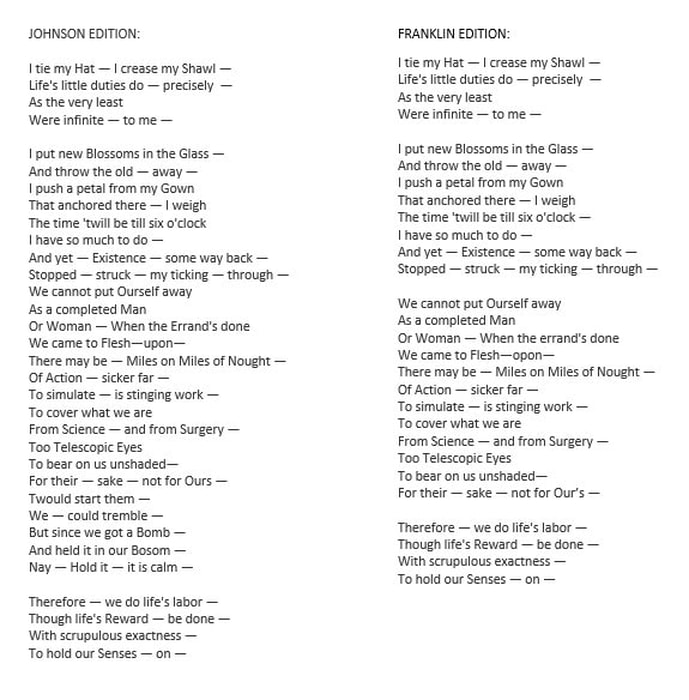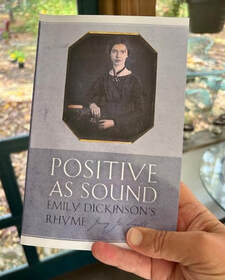NOTE: The mention of "#DickinsonDaily posts" refers to my daily posts on the social platform Counter Social.
Recent #DickinsonDaily posts have discussed the poet’s use of dashes. Yesterday I included a link to a site which shows how early publications of Dickinson’s poetry changed her punctuation – including the omission of dashes.
Hmm…I wondered if Dickinson ever used the word “dash” in any of her poems. The answer – no; however, she did use the word “punctuation” in one poem, “The Robin is a Gabriel,” & she used the word “punctuate” in “The Dying need but little, Dear.”
“The Dying need but little” is a brief but intensely poignant poem (BTW: In line 6, read “that one” as “that someone,” someone who will no longer perceive color and beauty in the rainbow).
I remember when my older sister died of cancer a few years ago, my wife & I sat with my brother-in-law in their darkened home as my sister lay in a bed, eyes closed, breathing heavily, with one simple but essential need – earbuds to listen to a podcast or music.
In the final hours, who knows if she even comprehended what she was hearing – but it was a “little” thing to make her comfortable – like a bit of water or a flower there to “punctuate the wall.”
Now that she is gone, it is difficult to perceive “color in the Rainbow.” In truth, there is a view of the Blue Ridge Mountains I pass every single day – it was her favorite view of the mountains on the way to and from my home – and I can’t help but think of her on a daily basis when I pass that panoramic view of the landscape.
I found an interesting site with an article that discusses “The Dying need but little, Dear,” and that essay includes this:
“Likewise ‘The Dying need but little, Dear’ (Fr1037) appears to be a sort of primer on the elements of mourning: a vase, a flower, a fan: It tells how to express sorrow and how to pity. The assurance (and coherence) of the syntax disintegrates in the second stanza, however, as the speaker confronts the problem of naming the experience. The last need of ‘The Dying’ turns out to be ‘Certainty that one / No color in the Rainbow / Perceive, when you are gone—.’ Parsable English, apparently, fails to house the self-contained experience of either mourner or Dying; nevertheless, the very ambiguity serves to merge the experience of the two. Who is the ‘one’? Who is ‘you’? Color leaches out of the Rainbow alike for both, and that recognition answers their common ‘need.’”
The site with this essay, "Emily Dickinson's Republic of Suffering," is HERE.
Also, take a look at the poem in Dickinson’s own handwriting. You can see that someone – probably an earlier publisher – added an “s” to the verb “perceive” in line 8. As a result, you’ll find versions of the poem in some books with “perceive,” and other versions in other books with the word “perceives.”
Fin.





 RSS Feed
RSS Feed
